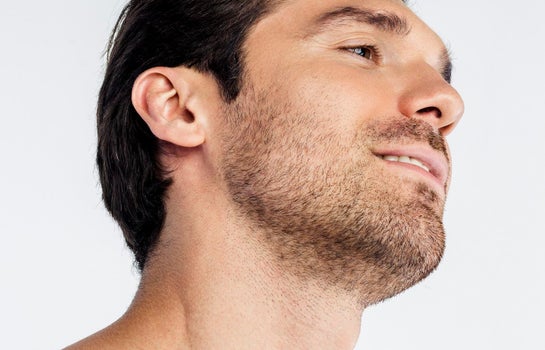
The demand for facial hair restoration is growing rapidly since many men find full beards trendy. The fact is that not all men have what it takes to grow facial hair or beards. It is not as simple as leaving the face unshaved. Other men may grow patchy facial hair, which doesn’t look attractive. The other cause of hair loss may be heredity factors, where one may come from a lineage that doesn’t grow facial hair.
There are many different ways to restore facial hair. The patient may decide to use medication that speeds up hair growth. However, its effectiveness is quite daunting. Another technique used for facial hair restoration is PRP for facial. This technique is also not that effective because it depends on the platelet count on the patient’s blood. PRP for hair loss involves extracting platelet-rich plasma from the patient’s blood and injecting it on the area suffering from hair loss. In this case, the face. The best and the most effective technique to treat facial hair loss is through a beard transplant.
A facial hair transplant guarantees the patient a custom desired look that lasts for a lifetime. However, before having this delicate procedure, your doctor will first need to perform a few tests on your skin to know whether you are the right candidate for this kind of procedure. After that, if you are eligible for the procedure, you can decide to opt for the procedure if you can afford it. The reason is that health insurance companies don’t cover this kind of procedure as they are often regarded as aesthetic treatments.

There is also the risk of linear scars since it is not 100% guaranteed that you will be happy with the outcome. If you want to get the best-desired outcome, you need to seek facial hair restoration from qualified practitioners with years of experience. Let’s explore how the hair transplant procedure is done and determine the best solution for facial hair restoration.
What is a Facial Hair Transplant Procedure?
A beard transplant involves removing active hair follicles from healthy areas of the scalp and implanting them along the jawline or any other area of the face that you want to grow. Although it sounds simple, it requires precision and various considerations.
The doctor who is performing a facial hair transplant can decide to use two of the available facial hair transplant techniques:
Follicular Unit Extraction (FUE)
In a facial hair transplant, individual hair units are harvested one by one from the scalp’s donor area or any other part of the body that grows hair. It is the newest approach to scalp and facial hair transplant. Many people prefer the FUE facial hair transplant procedure because it is less painful, and the recovery time is little.
Follicular Unit Transplantation (FUT)
This facial hair transplantation method involves a more invasive surgical process of cutting out a strip of skin containing healthy follicles. The trip is then transferred to the beard area or anywhere on the face. Although the procedure takes a shorter time than the FUE facial hair transplant, it leaves a linear scar, and it is also more painful.
Follicular units refer to groupings of hair follicles that grow from one exit point on the skin. In both approaches, the doctor will have to harvest about 2,000 to 5,000 hair follicle grafts. To prevent infections and to ensure that facial hair has the same texture as the head, the doctor needs to harvest hair from the patient’s scalp, public area, the chest, or at the top of the ear.
Steps Followed in a Facial Hair Transplant
Below are the steps that the doctor follows when performing a beard transplant:
Graft Hair Harvesting
Both the FUE and the FUT facial hair transplant will start with removing hair follicles from the donor area. The doctor will first have to shave the donor area and apply local anesthesia. Shaving the donor areas is essential to allow the doctor to have a clearer view of harvested hair follicles.
Implantation of Graft Hair
The doctor will store the harvested graft hair in a safe environment as they prepare the recipient area. Prepping the recipient area involves injecting the face with local anesthesia to reduce discomfort during the surgery. Once this is done, the doctor will then implant the harvested hair grafts into the recipient area.
Recovery
The recovery time will depend on the facial hair transplant approach the doctor used. If the doctor used the FUE hair transplant procedure, the recovery period would take one or two days. Recovery time also depends on the number of hair follicles implanted. The FUT facial hair transplant procedure will take longer – a week or two – since a strip of scalp skin was removed. Sometimes the patient may experience small crusts may form around each newly implanted hair follicle. This should not worry you as they will disappear after a few days. Shaving or trimming your beards will begin after a week or ten days. Don’t panic when you see your newly transplanted falling out after two or three weeks because it is quite normal.
Eligible Beard Transplant Candidates
As long as you have healthy hair at the back of the head, you can have a facial hair transplant. Healthy hair follicles are going to replace the dormant hair follicles on your face. Therefore, they need to be healthy. Before the facial hair transplant commences, the doctor will first examine the hair at the back of the head to see whether they are healthy enough. The doctor will recommend alternative treatments if there isn’t enough healthy hair at the back.
Conclusion
As we’ve explained to you, having a facial hair transplant offers the most effective way to restore your facial hair. However, not all can have this procedure. Therefore, consult your doctor first to know if you are eligible for such a procedure. You should also do your research first before treatment to get the best affordable treatments.




